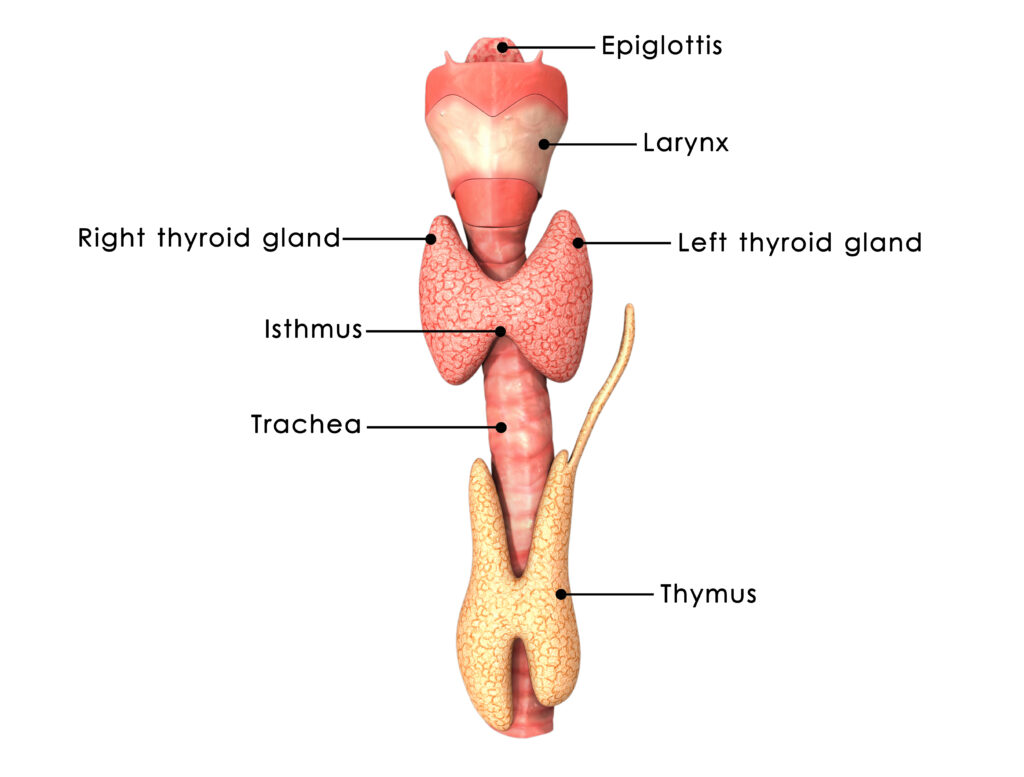
Hey gang, great to see you back again and eager to learn all you can my fellow truth seekers. Today, I greet you in the language of one of the most advanced nations of the planet – Konnichiwa.
Quick poll guys; wouldn’t it be great to have something significant named after you? Like a far away star, an island, a new element, or even just a street! I’ve always wanted to discover a new element; even got a name and symbol all picked out – Olivarium I’d call it, symbol Ov.
But you know what’s never good? It’s having a disease or virus named after you. You’ve got the infamous Alzheimer’s, Parkinson’s and Crohn’s diseases.
Then we move on to conditions like Hodkin’s lymphoma, Lou Gehrig’s, and Tourette syndrome. But you know what’s even worse; it’s being named after a condition that barely no one knows about.
But all intelligent banter aside, a condition doesn’t have to be famous to bring pain, discomfort or even death. So today, we’ll be finding out all there is to know about a one such ailment named after Hakaru Hashimoto, a Japanese physician of the Kyushu University medical school (1881 -1934).
We’ll find out what exactly Hashimoto’s disease is, why it’s named after the poor sap, how it presents itself in the human body as well as all the different treatments there are for it. Well, what are you waiting for, hop to it!
Table of Contents
What Is Hashimoto’s Disease?

Also known as chronic lymphocytic thyroiditis, Hashimoto’s disease is a form of autoimmune disorder. It causes the thyroid gland to get gradually destroyed by your own immune system. Obviously, this substantially reduces the thyroids ability to function properly.
For our naturally inquisitive readers, (bah, pleasant way of saying less informed chaps) the thyroid gland is located near the front of your neck and is responsible for making hormones which control metabolism related functions. This includes functions like the heart rate as well as how quickly you use up calories from food.
Early on, there might not be any symptoms, but some people develop hypothyroidism with all its accompanying fatigue, malaise, weight gain, constipation and potential complications.
Overtime, the thyroid may enlarge and form a painless or slightly painful goiter. The main cause of Hashimoto is not quite known, but it’s thought to be combination of both environmental and genetic factors. More on the symptoms and causes later on. But first, we digress.
So, why exactly is it called Hashimoto’s disease? Did poor old Hakaru suffer from the condition most of his life? Or maybe he came from a long generation of prominent doctors and spent all his life doing unspeakable things to sick patients all in the name of science?
Yeah it’s the second one, sorry for leading you on – it’s all true except the unspeakable things, they were speakable, and very helpful to diagnosing the new disease. Hashimoto – a hero by all means.
So, where were we? Ah yes, currently, Hashimoto’s disease affects about 5 percent of the world’s population at one point. But it’s people aged 30 to 50 that are more at risk.
Fortunately, there are several different treatment options for managing Hashimoto and reducing the size of the goiter. In any event, surgery is rarely required.
So, how exactly do you know it’s Hashimoto and not something else?
Symptoms of Hashimoto

The problem with auto-immune conditions is that almost all of them come with similar symptoms. That’s why high chances are that your first trip to the doctor will be misdiagnosed, and your second one probably.
However, diseases linked to the thyroid and lymphatic systems have their own unique set of symptoms, and that’s where chronic lymphocytic thyroiditis falls.
Some of the most common symptoms associated with Hashimoto’s disease include malaise, fatigue, puffiness, joint and muscle pain, and the infamous weight gain.
Right when you think you’re just getting fat, here comes the second set of symptoms. It starts with the swelling and enlargement of the thyroid gland leading to a lump on the neck called a goiter.
Constipation will also be a major (not to mention painfully bumstaking) tell tale sign. And speaking of a difficult metabolism, your heart rate might get slower than usual leading to chills and feeling cold.
Women seem to be affected more with additional symptoms like thinning hair, irregular periods, heavy flows, panic attacks, and trouble achieving or maintaining a pregnancy to term.
As always, I’ll have the full list of symptoms laid out neatly below for our skimmers (I see you skimming through my beautifully written body… of work). In case you are, you could be missing a lot of helpful information up there, so start over!
- Fatigued, Sluggish and Cold
- Sleepy with slowed heart rate
- Joint and muscle pain
- Unexplained weight gain
- Pale, dry skin
- Hair loss and brittle nails
- Tenderness and stiffness
- Enlarged tongue with puffy face
- Depression
- Swelling of the legs and neck
- Excessive menstrual flow
- Inability to conceive
What Causes Hashimoto’s Disease?
By and large, the exact cause of young Hakaru’s disease is not really known. All we have are some pretty educated guesses on several factors believed to contribute. But instead of starting off with scientific speculation, let’s check out some fat facts first.
We know that Hashimoto’s is an autoimmune disease which causes your body to treat the thyroid gland like foreign tissue and attack it.
Again, the underlying cause of the autoimmune process remains largely unknown. However, it seems to be more common in women and displays a kind of hereditary or genetic trait. Here are more of the causes in greater detail.
- Genes – Most people with Hashimoto’s disease often have relatives or family members with either thyroid disease or another autoimmune disease. As such, there is some evidence of a genetic trait to the disorder.
- Hormones – Some studies have revealed that Hashimoto’s affects as much as 10 times more women as men. This would suggest that certain sex hormones could be at play. The hormone factor is further reinforced by the fact that a percentage of women develop thyroid issues after the first year of having a baby.
- Excess Iodine – Just like goiter itself, Hashimoto’s can also come from a little too much table salt in your diet. Research shows that too much iodine and other drugs may trigger thyroid disease in a percentage of the population.
- Radiation exposure – Ah yes, good old radiation. It’s still hard to believe what the government put our men through in early nuclear bomb tests back when they didn’t know what radiation was (or didn’t care). The death rates were in the millions and unbelievably painful, unlike anything you’ve ever seen. Combined with the Hiroshima nuke and the fallout that followed, increased cases of thyroid diseases have been reported all through the world.
Treating Hashimoto’s Disease

It really weighs heavy on my heart Oliviarites, that I have come to be the bearer of bad news most of the times. Unfortunately this is one of those difficult times. Currently, there is no known cure for Hashimoto’s disease.
The exact timeframe for which the autoimmune disorder and inflammation process continue still remains highly unpredictable.
And while there are several treatment options available that we’ll look, they mainly involve a lengthy observation period, attempts to regulate hormones and restore your metabolism to normal.
And if you do need any medications, chances are that you’ll be on them the rest of your life. Here’s a preview of all the medical treatments available.
i) Synthetic Hormone Therapy
If your Hashimoto’s disease is caused by hormone deficiencies, your doctor will recommend thyroid hormone replacement with agents such as triodothyronine, levothyroxine, and desiccated thyroid extract.
One tablet a day is the general prescription to keep thyroid hormone levels normal, but the treatment will be for the rest of the patient’s life. Your doctor will also have to monitor your hormone levels regularly because excessive amounts of the thyroid hormone could cause accelerate bone loss.
ii) Surgery
As I said earlier, surgery is rarely required for patients with Hashimoto’s disease. The thyroid gland is quite essential and all attempts to keep it working in peak condition should be undertaken.
However, there are cases where extremely large goiters form which seem to be deaf to any medication. If the goiter doesn’t improve or worsens overtime, then it may be necessary to remove the thyroid altogether.
Can Essential Oils Help with Hashimoto Disease
If you’ve already been diagnosed with Hashimoto’s, then chances are that you’re probably on artificial thyroid hormone medications. I’m not saying that these pharmaceuticals are bad, far from it!
Artificial thyroid hormones have been saving lives and helping manage Hashimoto’s disease for years. Unfortunately, I can’t say the same about the side effects – from the incessant nausea to possible accelerated bone loss, they can be truly devastating.
So even with western medication, some of the symptoms of hashimoto will still affect the quality of life.
This is where essential oils come in to lend a helping hand. Not only can they help ease most the symptoms that come with thyroid problems, they also lessen the ill side effects of artificial hormones.
Of course, there isn’t that much research to show a direct correlation between Hashimoto’s and the use of essential oils. But there is plenty of anecdotal evidence that suggests these ethereal oils do help to a certain extend with thyroid related health problems.
This includes easing stress and adrenal fatigue, removing toxins from the body, eliminating harmful bacteria and infections in the body, controlling the production of thyroid hormones, reducing the effects of estrogen dominance, and much more.
I’ve rounded up some of the leading oils that show promise in treating thyroid problems.
Best Essential Oils for Hashimoto’s

1. Clary Sage
We all know that stress is the leading cause of hyperactive thyroidism. So if you want to treat Hashimoto’s disease, this is the place to start. A clinical study revealed that Clary Sage essential oil has the ability to reduce a stress hormone known as cortisol in the body by as much as three times.
No matter what meds you’re on, stress will always make hypothyroid symptoms worse and could even lead to adrenal fatigue and other health issues. Similarly, clary sage oil helps regulate the TSH hormone levels which is actually the main goal of prescription levothyroxine.
2. Clove
Chock full of warming properties, clove essential oil is your best bet for fighting off pain and inflammation associated with Hashimoto’s disease. Currently the subject of numerous clinical studies, clove essential oil is already a go-to oil for massages, foot rubs and bath time blends.
It’s also a key ingredient in thieves oil and largely contributes its antioxidant properties for glandular and free radical protection. As a bonus, the antifungal properties help fight off candida which could participate in autoimmune diseases like Hashimoto,
3. Spearmint
Much like its more famous cousin (peppermint) spearmint essential oil is also a carminative and digestive essential oil. This basically means that it has the ability to ease constipation as well as relax the intestines and relieve gas – all symptoms common to hashimoto’s.
At the same time, spearmint oil is also a cephalic which calms the nerves and eases stress while the cooling properties deal with the typical overheating that comes with thyroid problems.
4. Frankincense
Here’s another underrated essential oil that could help work wonders for almost any type of thyroid related problem out there. Used correctly, Frankincense essential oil can offer numerous benefits for Hashimoto patients.
It helps regulate the production of hormones such as estrogen, relieves constipation, eases stomach cramps, soothes muscle pains, and relaxes the brains limbic system. All in all, frankincense enhances the entire immune system to give your thyroid gland a much needed boost.
5. Geranium
Ladies, I don’t care if you have Hashimoto’s or not, this is one essential oil that you will need in your life at one point or the other. Geranium essential oil has a unique ability of balancing out certain hormones which go in short supply during menopause.
It’s these hormones that wreak havoc on the thyroid gland leading to issues such as Hashimoto’s. Geranium not only reduces the inflammation that comes with a hyperactive thyroid, it also gets rid of stress and fatigue. What’s more, it also slows down circulation for controlled metabolism and treatment of high blood pressure.
6. Lavender
This is probably the most versatile oil on the planet known for literally hundreds if not thousands of uses. When it comes to Hasimoto’s disease, there are very many benefits to be reaped from lavender.
We already know about lavender’s super calming effect and how valuable it is in the fight against stress and depression. However, a recent study revealed that lavender can also protect against oxidative stress as well as diabetes. Hashimoto’s patients often display signs of insomnia and sleeplessness. Lavender is one of the most recommended essential oils for dealing with sleeplessness every time.
7. Rosemary
If you suffer from Hashimoto’s disease, chances are that you’ve already started experiencing some hair loss. If that’s the case, you’ll need to add Rosemary essential oil to your collection.
In addition to stimulating hair follicles, Rosemary essential oil also reduces joint aches and cuts down swelling normally associated with underactive thyroid problems. But the merits don’t end there guys (could explain why the oil is so damn expensive). Rosemary essential oil has also been found to boost liver function, decrease cortisol levels and improve memory function.
Best Essential Oil Recipes For Hashimoto

Recipe 1: Hashimoto’s Thyroid Gland Support Blend
Ingredients
- 3 drops Myrrh
- 3 drops Frankincense
- 2 drops Clove
- 2 drops Lemongrass
- 10 ml Fractionated coconut oil
Method
As mentioned earlier, one of the primary tell tale signs of Hashimoto’s disease is swelling, inflammation and enlargement of the thyroid glands. That’s why you’ll need this here roller blend to help combat the pain and bring down the swelling.
You’ll notice that I added myrrh essential oil to the mix. That’s because this multipurpose oil is a great antioxidant that reduces swelling and inflammation. To make use of this recipe, combine all the ingredients in a small roller bottle and mix well. Roll the blend gently between your palms to get an even better blend which you’ll apply daily directly over the thyroid at the front of the neck.
Recipe 2: Hashimoto’s Adrenal Fatigue Warm Compress

Ingredients
- 2 drops Clary Sage
- 1 drop Geranium
- 1 drop Rosemary
- 1 drop Clove
- Tablespoon of Macadamia oil
Method
For people with Hashimoto’s disease, adrenal fatigue can be a day to day issue. What with the altered metabolism and hindered thyroid hormone production, finding the energy to go about your daily tasks can be quite a drag.
With this recipe, you’ll be back to your peppy self in no time. Start off by mixing all your ingredients in a glass jar or beaker. Once mixed in, apply the blend to the neck, chest and lower back. Cover the back and or neck with a warm cloth and let the goodness seep in for about 10 minutes.
Recipe 3: Thyroid Foot Rub for Hashimoto’s Disease

Ingredients
- 6 drops Frankincense
- 6 drops Lemongrass
- 6 drops Clove
- 4 drops Spearmint
- 2 drops Lavender
Method
You’ve heard it hundreds of times – the feet are the gateway to the entire body – all bones ligaments and organs included. So if you want to get to the thyroid, there may be a way thought the feet.
I chose Frankincense as the star for its numerous benefits to Hashimoto patients. With the other essential oils, the blend will help regulate the production of hormones such as estrogen, relieve constipation, ease stomach cramps, and soothe muscle pains.
To get your rub a dub on, kick off by combining all the ingredients in a glass jar. Once they’re well combined, get a friend or family member to apply and massage the blend under the soles of your feet with focus on the ball of the foot which is a major reflexology point for the thyroid.
Recipe 4: Hypothyroid Aches Massage Blend

Ingredients
- 12 drops Lavender
- 10 drops Peppermint
- 9 drops Rosemary
- 7 drops Birch
- 5 drops Eucalyptus
- 60 ml (2 oz.) fractionated coconut oil
Method
Yeap, you can expect plenty of massage blends for this one. That’s because any thyroid related problems tend to be accompanied by some resinous muscle aches and joint pains.
So if you can find a way to work those joints and muscles while administering some medication at the same time, why not am I right? To make use of this here recipe, combine all the oils in a glass bottle and shake well. Roll the oil between your palms and massage it generously on the body, back, and joints.
Recipe 5: Anxiety Relief Immune Boosting Diffuser Blend

Ingredients
- 2 drops Lemongrass
- 2 drops Peppermint
- 2 drops Lavender
- 2 drops Orange
- 2 drops Grapefruit
- Diffuser
Method
What better way to wind up our segment than with a neat, soothing night-time recipe that will have you knocked out and drooling in minutes.
Not only with this particular combination help bust stress and anxiety, but it will also boost your immune system as you sleep through the night. And the best part is; no messy mixing! Just drip the oils in your diffuser as indicated and diffuse as normal.
The Final Word
There you have it folks, we wind up yet another educative segment on everything you need to know about Hashimoto’s disease. We learned what exactly the disease is, and why they named it after the Japanese medic Hakaru.
We’ve also seen that while there is no cure for the disease, there’s definitely no shortage of ways to treat and manage it. So take heart my fellow truth seekers, and know that you’re never alone in your journey to recovery.
You’ve got little old me as well as the entire Olive Nation holding your hand in the journey to healthy living. And we’ll be right here if you need us.
